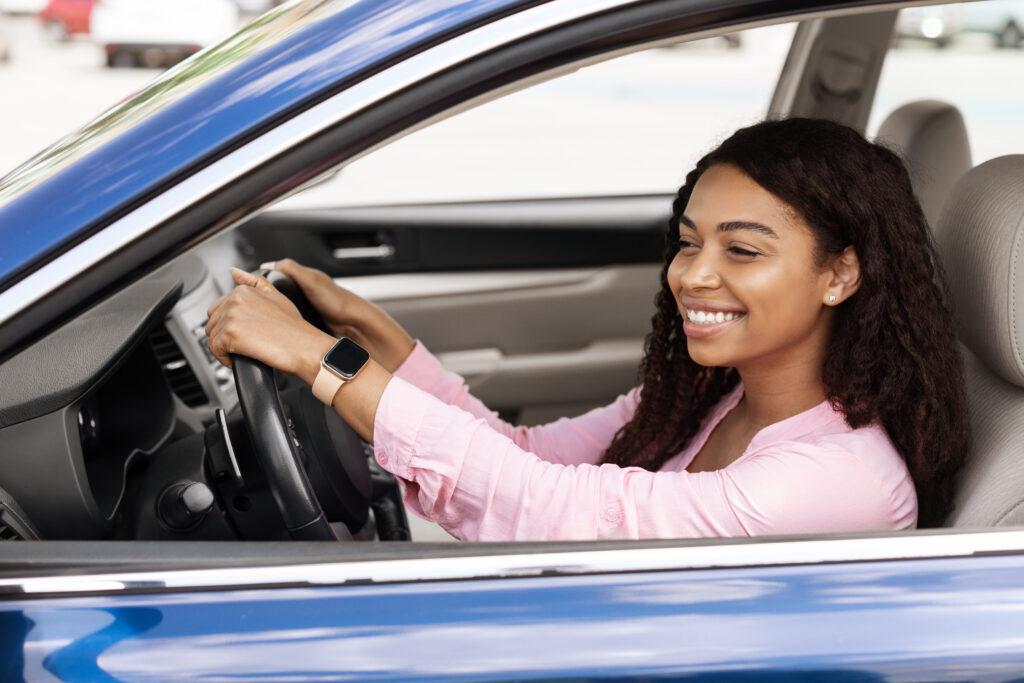
Need a guide to help you drive in Germany as an Au pair? Check out this post for an Au pair guide on driving in Germany!
As someone who has their driver’s license, driving in Germany is definitely a life goal of mine as an Au pair. I actually got my license last year over the summer and I’m always looking for different ways I can enhance my driving experience. For example, last year for my birthday, I rented a car in Iceland so that I could have the opportunity to drive in another foreign country for the first time. It was AMAZING. However, driving in Iceland was way different from driving in the U.S..
So, if you’re planning to become an Au pair in Germany and you have your driver’s license, I highly recommend studying this guide so that you can get familiar with the rules of the road in Germany. In fact, this post not only highlights the rules of the road but it also informs you of the seatbelt and car seat rules you need to know for your host children.
Au Pair in Germany Series
P.S. This is a post in my Au Pair in Germany series. Here is the complete series:
Au Pair Origin and History: What is an Au Pair: The Origin and History
Au Pair Tasks: What Does an Au Pair Do: Au Pair Tasks
Au Pair Agencies: The 7 Best Au Pair Agencies for Americans
German Language Learning Apps: The 10 Best Apps for German Learning as an Au Pair
Au Pair Guide: How to Become an Au Pair in Germany
Au Pair Visa: Au Pair Visa Germany: Requirements for Americans
Au Pair vs. Nanny: Au Pair vs. Nanny: What is the Difference?
Au Pair Salary: German Au Pair Salary: What to Expect
Au Pair Rematch: The Top 10 Reasons Why Au Pairs Rematch
Au Pair Driving: The Au Pair Guide to Driving in Germany
German A1 Exam: How To Pass Your German A1 Test To Become An Au Pair
Host Family Interview: Here Are 100 Host Family Interview Questions You Need To Ask
Host Family Red Flags: 10 Host Family Red Flags You Should Watch Out For
Packing List: Au Pair Packing List: Germany Edition
BFD: BFD in Germany: What Americans Need To Know
FSJ: How to Do an FSJ in Germany
Ausbildung: Ausbildung in Germany: Here’s Everything You Need to Know
Requirements for Driving in Germany
From an American perspective, there are just a few requirements that need to be met if you want to drive in Germany as an Au pair.
- You must be at least 18 years of age
- You must have a valid and current driver’s license from your state
- You must have a valid and current passport
- You must have a valid car insurance policy (Your host family should add you to their car insurance policy for this requirement to be met.)
- *You must have an International Driving Permit (This is only required if the Au pair is planning to drive in Germany for more than 6 months.)
*In fact, according to the German Missions in the United States, U.S. citizens who are planning to drive in Germany for more than 6 months are required to go to their local driver’s registration office (Führerscheinstelle) to notify them that they want to continue on their U.S. driver’s license. They would then require the Au pair to present their International Driving Permit to them as well as proof that they plan to leave Germany before the year is up. This proof can be in the form of a return ticket to the U.S. after an Au pair year or a copy of the Au pair contract.
To find the closest Führerscheinstelle near you, simply do a Google search online. In addition, you’re also welcome to ask your host family too if you have no luck.
Getting an International Driving Permit
An International Driving Permit for your Au pair year in Germany should be in your possession prior to your departure. These permits can be obtained from your local AAA office for a small fee. However, if you are already abroad and you need an International Driving Permit, you can mail in your completed application to the following office:
AAA/IDP
1000 AAA Drive
Heathrow, FL 32746
Attn: Mail Stop #28
In addition to your application, some other things you will need include:
- Photocopies of the front and back of your license
- Two original passport photos
- Money for the permit fee (about $20)
Rules of the Road
When it comes to the rules of the road in Germany, it’s important to be familiar with them so that you can keep yourself and your host children safe while you’re driving the car.
Seating
In order for your host children to sit in the front seat with you, they must be at least 12 years old or 150 cm tall. In addition, children under the age of 12 or 150 cm, must use an approved child seat. Failure to follow this rule can result in a fine of 60 euros.
In addition, here are some other rules to keep in mind when you’re driving with your host children.
- Everyone in the vehicle is required to wear a seatbelt at all times while the car is in motion
- Children 3 & under sit in a car seat
- Children under 12 or 150 cm have a booster or a restraint system
Side of the Road
Similar to the U.S., everyone in Germany drives on the right side of the road. This therefore shouldn’t be a problem for American Au pairs or anyone else who is used to driving on the right.
Priority
When it comes to driving in Germany, it’s important to be aware of when you have the right of way when you’re driving. Here are a few things you should know about priority:
- At intersections or junctions, traffic from the right-hand side generally have the right of way unless stated otherwise by a road sign.
- You must yield to oncoming cars if you are turning left at an intersection.
- You must give the right of way to emergency vehicles with flashing blue lights at all times.
- Cars in a traffic circle have the right of way unless stated otherwise by a road sign.
- You must not enter an intersection in heavy traffic if your exit is not clear.
- Buses and school buses have priority whenever they leave a bus stop.
Traffic Lights
Germany uses the international three-color traffic light system to control traffic. U.S. citizens should know however that they cannot turn right on red unless there is a red traffic light with a green arrow next to it.
Speed Limits
There are two standard speed limits you should be aware of as an Au pair driving in Germany. If you’re in the city, the default speed limit for urban areas is 50 km/h (31 mph). If you’re in the country, the default speed limit for rural areas is 100 km/h (62 mph).
Failure to follow the speed limit in Germany can result in being fined by a traffic camera like the two below.
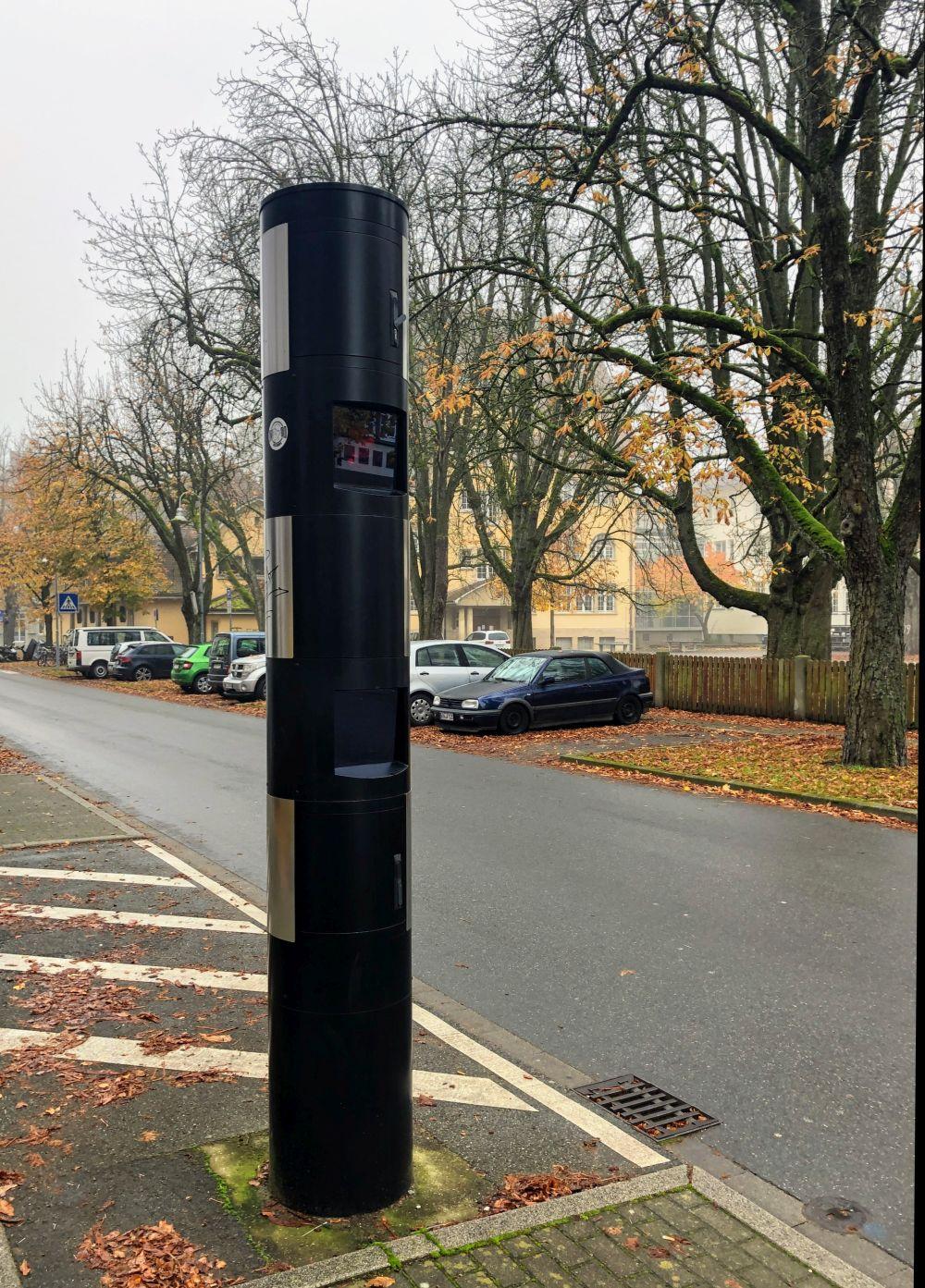
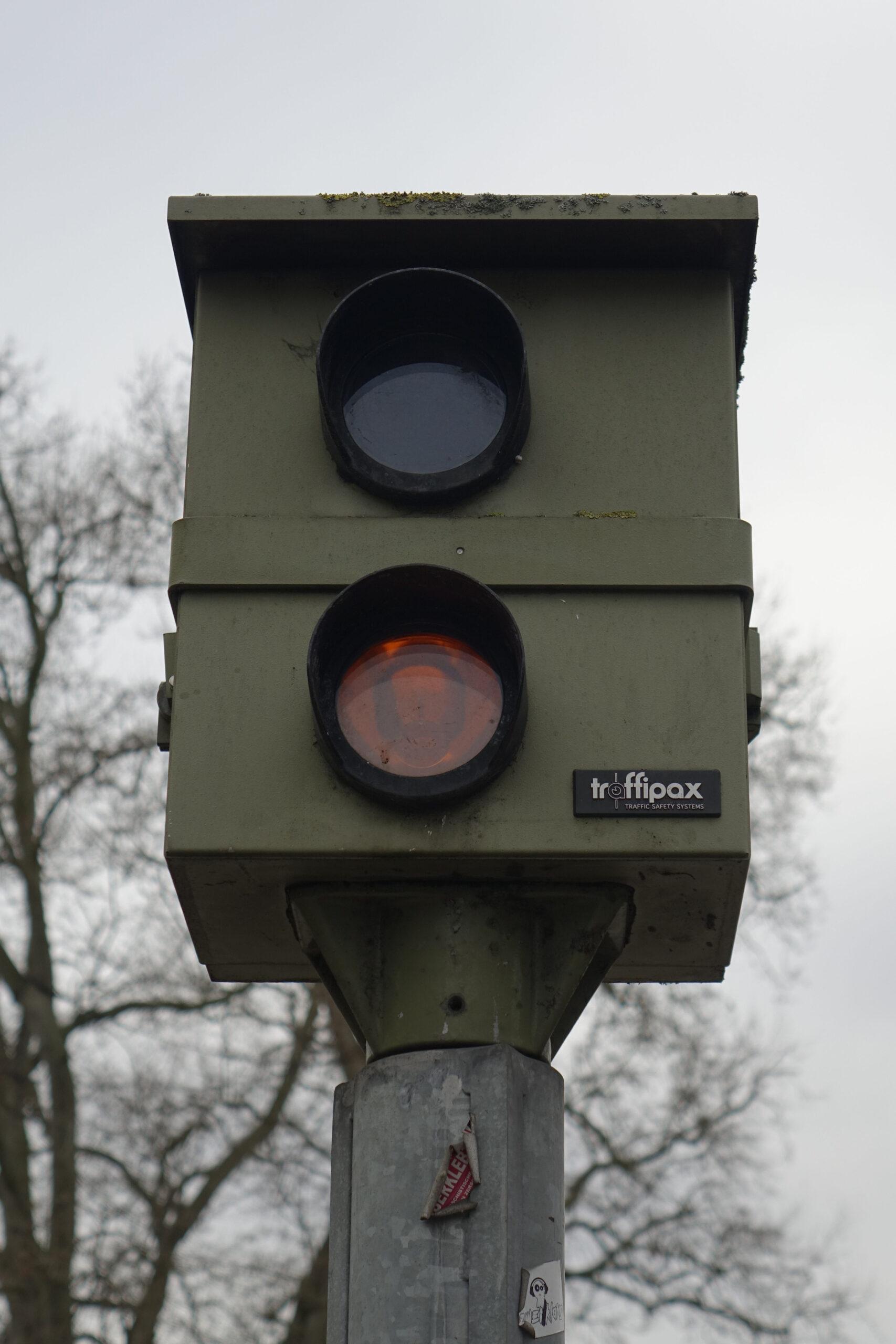
Drinking and Driving
Even though I don’t believe any Au pair would drink or drive while driving their host children, it’s important to be aware of this law in case you end up having a beer before getting on the road.
Unlike the USA, having a blood alcohol level of 0.05% or higher is considered to be under the influence in Germany. In fact, that’s just two small beers for the average person. Therefore, if you do plan to drink a beer in Germany, I highly recommend getting a ride from someone else or a rideshare to avoid a 500 euro fine if you’re stopped by the police.
Types of Roads in Germany
Knowing the different roads in Germany as an Au pair can definitely be helpful when driving in another foreign country. You’ll feel much more at ease when you’re navigating around the host country and your host family will thank you for it.
Autobahn
Known as Germany’s freeway system, the Autobahn is one of the most famous roads in Germany. Globally, it’s known for having no speed limit, however, this only pertains to 70% of it. The other 30 % of the Autobahn is dependent on traffic flow or a speed limit. The maximum speed limit you might see on the Autobahn is 130km/h.
Another thing that’s also important to note are the signs for the Autobahn. The sign on the left below tells you when the Autobahn begins and the sign on the right tells you when it ends.
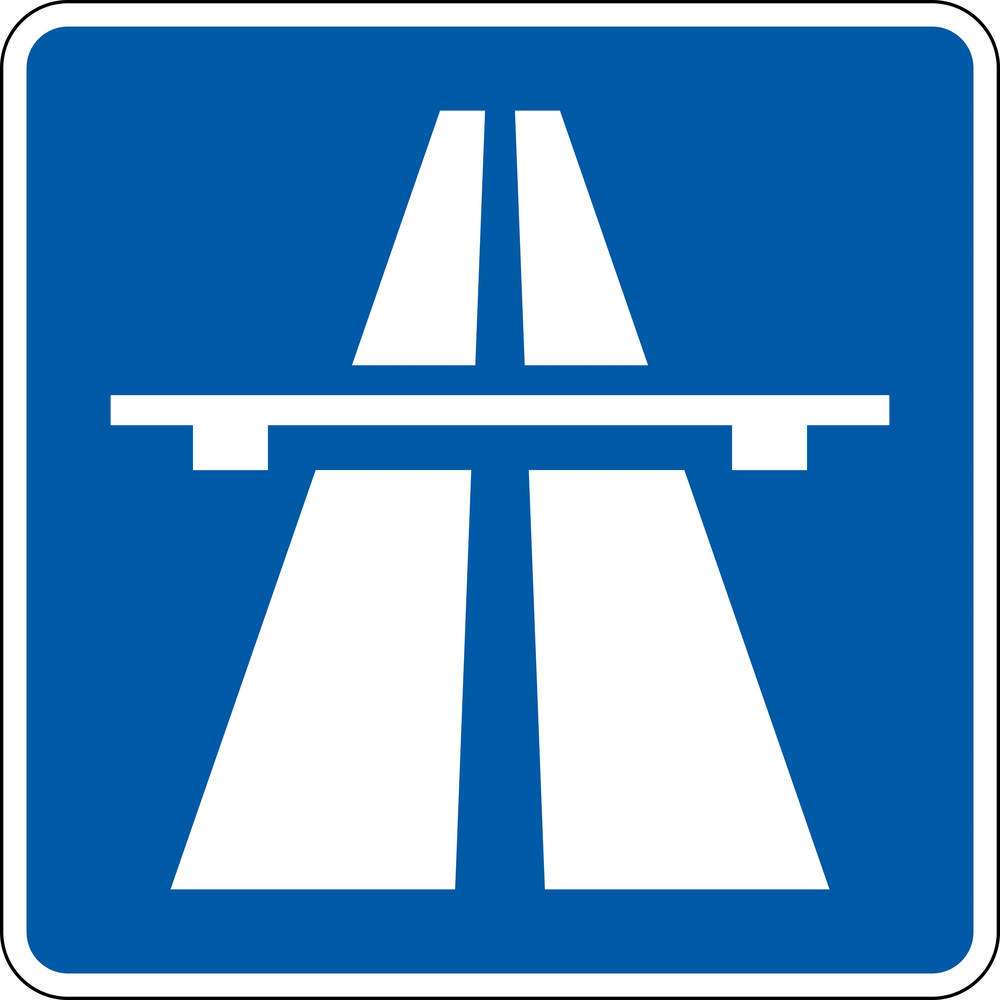
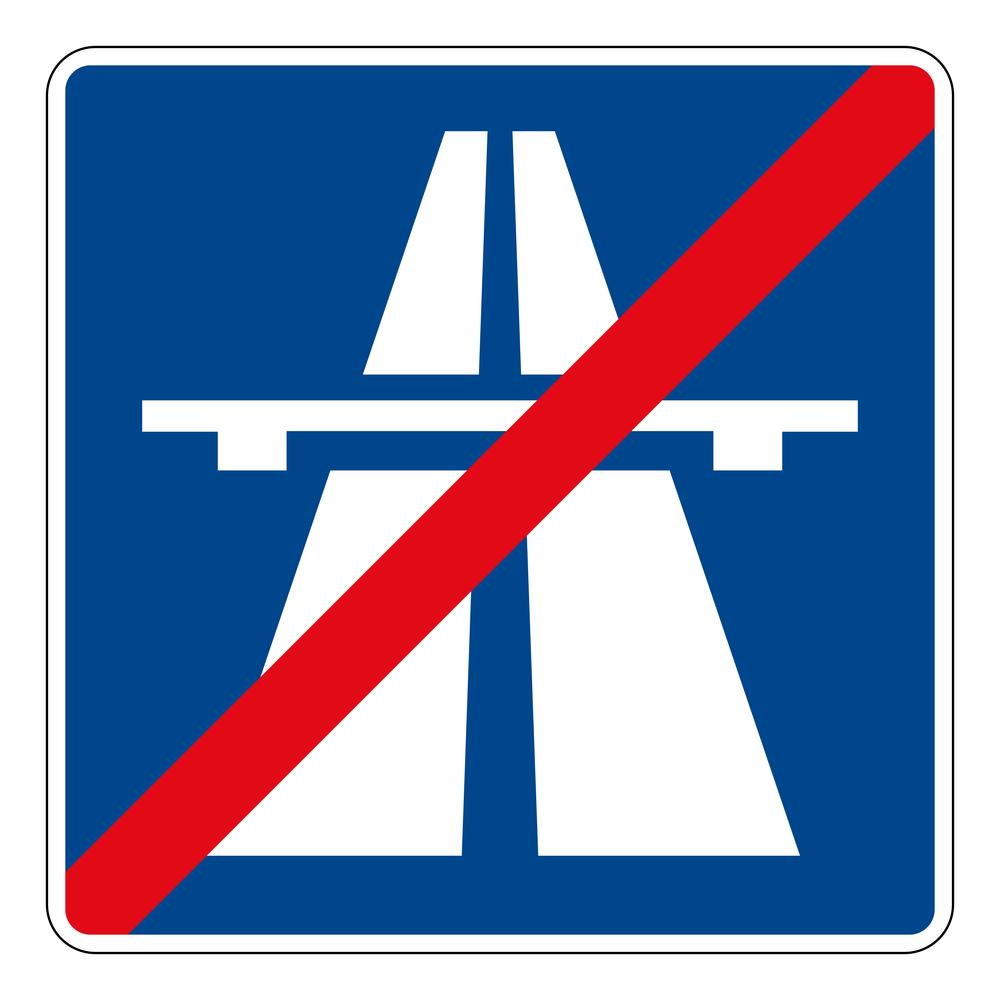
In addition, when do you enter the Autobahn, check your rear view mirror and your blind spot carefully before pulling into the left lane to merge. Cars on the Autobahn are already traveling at 160-180km/h so it’s best to speed up. Keep in mind though if you do end up slowing down the Autobahn for some reason you will get backlash from other drivers. In fact, it’s been reported that impatient drivers in Germany tailgate, flash, or blinker at other drivers who are driving slow.
In fact, this actually happened to me once while I was driving in Iceland but in all honesty I was driving the speed limit.
But anyways, if you want to have some idea of what the Autobahn is like in person, I highly recommend watching this video below. The Autobahn itself is also marked with the letter “A” to differentiate it from other roads.
Bundestrasse
Known as the main roads in Germany, the Bundestrasse is another alternative to getting to your destination in Germany without taking the Autobahn. These roads are usually marked with the letter B to differentiate it from other roads and they have a yellow sign.

Land and Regional Roads
If you’re driving in between small towns as an Au pair, you’ll come across roads like the “Landesstraße” or the “Kreisstraße”. These roads are marked by a letter that corresponds to their location and you’re generally expected to slow down when you’re driving on them.
City Roads
City roads are also another type of road you might come across if you’re an Au pair driving in the city. These roads are not necessarily impossible to drive but as stated earlier they have a speed limit of 50km/h.
Tolls in Germany
Tolls are actually nonexistent in Germany if you’re driving a passenger car. In fact, unlike other European countries, Germany actually allows passenger cars to drive on the Autobahn free of charge.
German Road Signs
Here are some important road signs you’ll need to get familiar with if you’re driving in Germany as an Au pair.
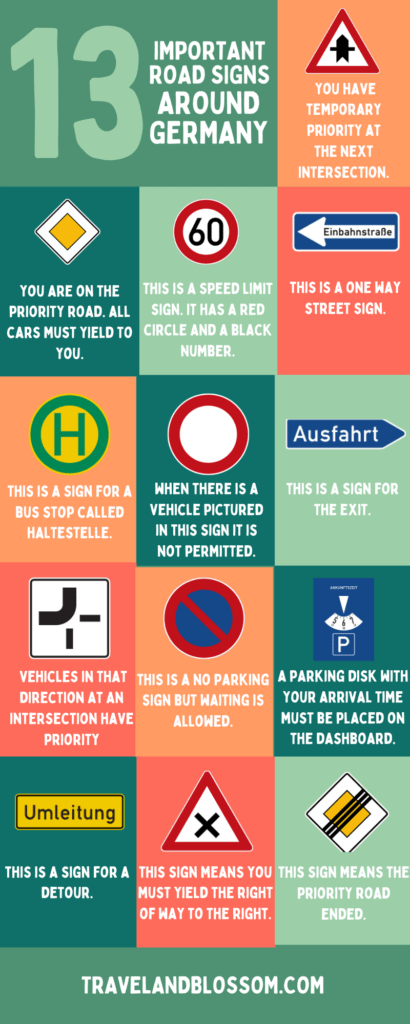
Parking in Germany
In addition to driving in Germany as an Au pair, it’s expected that you’ll have to park the car as well.
Parallel Parking
If you are in the city, parallel parking is very common in this area so be sure to familiarize yourself with this parking method.
Timed Parking
In addition, when it comes to street parking, there will sometimes be a limited amount of time to park your car. If that’s the case, be sure to place a parking disk (Parkscheibe) on your dashboard that displays your arrival time (Ankunftzeit). Your host family of course should be able to provide you with a Parkscheibe or you can print one online on your own.
Parking Garages
Parking garages in Germany tend to not be the best for larger vehicles due to their tight turns and small parking stalls. Therefore, I highly recommend driving a large vehicle with a backup camera if you plan to park in a garage. However, if you have a small or compact car, then you should be fine.
Parkschein
In addition, instead of seeing individual meters when you’re parking on the street, there’s often a kiosk you have to visit to pay for parking in change. Once you’ve paid, place the receipt that you received on your dashboard so that you can park there legally.
Renting a Car in Germany
If you were for some reason to rent a car in Germany on your free time, here are a few tips you should take note of before you do.
- Even though the minimum age to drive in Germany is 18, some rental car companies have different age requirements when it comes to renting a car.
- Although this isn’t the most common thing, small, compact cars are actually better to rent than large cars since they can fit in small alleyways, garages and narrow alpine passes.
- If you get a quoted price for your rental car from Rentalcars.com, it may or may not include the 19% Value Added Tax (VAT) or other fees you’d have to pay. So do keep that in mind!
- Expect a majority of the rental cars in Germany to have a manual transmission. Therefore, if you need an automatic car, it’s better to book ahead.
- Don’t book your rental car at the airport if you’re trying to stay on a budget.
- Make sure you report any damage you see on the rental car before leaving the car rental location.
- Ask for a Parkschiebe from the front counter before you leave since you’ll need it for timed parking situations.
- Make sure you know what gas your car needs before you depart. Some cars in Germany actually use diesel gas so that’s something you’d want to keep in mind.
Lastly, if you’re looking to purchase a rental car for a future trip, I highly recommend booking one early using the widget below. It will take directly to Rentalcars.com on their site where you’ll see all different kind of cars with quotes.
Winter Driving in Germany
Winter driving in Germany is not as bad as foreigners might think. In fact, Germany itself is known for clearing their roads very quickly when it snows.
Glatteis
Glatteis, however, is a whole other obstacle on it’s own since it’s a very common hazard around this period. Glatteis, for those who are not familiar with it, is simply black ice in Germany that can be literally translated as “smooth ice”. This type of ice is really hard to spot when you’re driving in Germany in the winter but the best way to recognize it is by its reflection.
Therefore, please be very cautious when you’re driving in the early morning, late evening or on a bridge in winter. You could lose control of the car if you drive across Glatteis so it’s best to take your foot off the gas if you spot it. In addition, steering the car towards the edge of the road (an area of salt and sand residue) can help if you start to lose control.
Driving in Germany FAQs
Overall, to end this post, I thought it would be helpful to answer some frequently asked questions you might have about driving in Germany.
What does every car need in Germany?
Every car in Germany needs a safety vest, a warning triangle and a first-aid kit inside before you can drive it.
How do I fill up my gas in Germany?
Paying at the pump is not actually common in Germany. Instead, you must pump gas into your car first and then pay inside with your pump number.
What happens if you run out of gas on the Autobahn?
Running out of gas on the Autobahn is actually illegal so do make sure to fill up your car with gas before you enter it.
In the end, I really hope you enjoyed reading this Au pair guide on driving in Germany. Please let me know in the comments down below which fact about driving in Germany surprised you the most. I would love to hear from you! 🙂
Love this post? Pin it for later!

Follow me on Instagram!
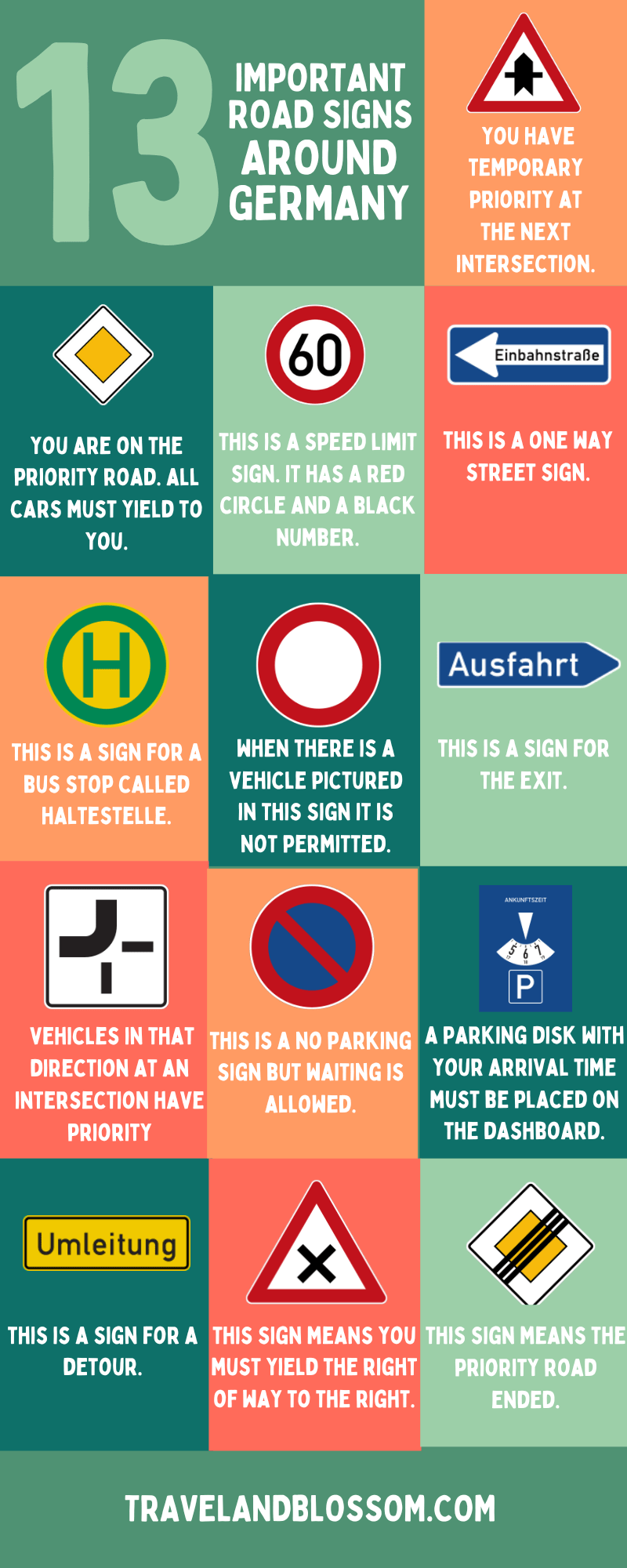










Leave a Reply